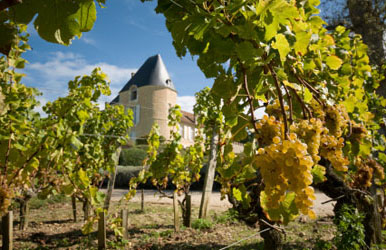Sweet wines differ in many ways from dessert wines, and they attract totally separate markets from each other. First and foremost in this difference, a sweet wine is usually made from a dry wine with added sweetener. While a dessert wine is naturally sweet and considerably higher in alcohol content.
How sweet wines can be made
Many sweet wines have been made by either:
- The use of unfermented grape juice being added into the dry wine in order to make it sweeter (this juice is called Suss reserve in Germany where as they invented the technique).
There are tight rules about using this 'sweet reserve' as it's volume must not be more than 15 percent of the final wine, and it's origin and quality must also be identifiable as being the same as the base wine to which it is being added.
- Inducing a stopped fermentation which involves arresting the ferment at the desired residual sugar content by the addition of sulphur dioxide. This is not always a straight forward process as once a ferment is well under way it can be hard to stop it. Also, beware home winemakers, do not overdose the wine if the ferment refuses to stop! Immediate filtration is one way to slow the activity down, but the only way to stop it fully, (if the addition of sulphur dioxide hasn't done so already) is to undergo a full sterile filtration. One drawback here is you will inevitably be stripping some good flavours out of the wine.

How dessert wines are made
Meanwhile the process a dessert wine goes through is much more unique and special, because of the close attention to detail during the ripening and subsequent harvesting period of the grapes.
As the grapes ripen their natural sugar content increases, and should these same grapes become infected with the Botrytis cinerea fungus, and should the weather be dry and hot, this very same fungus will develop into a "grey rot". This rot will then feed on the sugars within the grapes causing a concentration of flavours, and grapes will often turn into raisins at this time.
The bunches of grapes are picked in the late autumn/fall, and are frequently selected berry by berry taking several passes through the vineyard to complete the harvest. The sumptuous liquid is extremely high in sweetness which will result in a rich, sweet wine with a high alcohol level. And this is our famous dessert wine.
Another difference between sweet wines and dessert wines is the market that each one is aiming towards. Traditional sweet wines are at the lower end of the general wine price range, so they have a mass market appeal. They are also much easier to make but often lack character, and can be rather insipid to drink. On the other hand, with all the extra work and effort that goes in to producing a dessert wine, its cost is considerably higher making it imperative to achieve a relative high return. This makes it a luxury to most consumers.
Dessert wines bare no resemblance at all to their sweet wine cousins, and don't get muddled when, at the end of a meal, you are ordering a dessert wine to accompany your sweet, rather than a sweet wine to pair with your dessert!
To learn more about wine, please visit Understanding Wine where you will find a wealth of interesting wine information.
EzineArticle Source: Dessert Wines and Sweet Wines Are a World Apart
By Rob Hemphill


